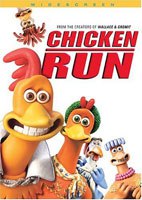Why Are Poultry Processing Plants Boiling Millions Of Birds Alive?
 Most Americans eat meat, but that doesn’t mean that they want the animals destined for their plates to suffer a painful death. Yet U.S. Department of Agriculture records show that every year, almost a million birds are plunged into boiling water by accident because of small failures within the largely mechanized slaughter process.
Most Americans eat meat, but that doesn’t mean that they want the animals destined for their plates to suffer a painful death. Yet U.S. Department of Agriculture records show that every year, almost a million birds are plunged into boiling water by accident because of small failures within the largely mechanized slaughter process.
(Warning: the rest of this post describes some of the slaughter processes and what happens when they fail. If that kind of thing normally bothers you, stop and find something else to read.)
Federal humane slaughter laws cover mammals, but not birds, or these problems with the slaughter process would lead to criminal charges. Suspending, say, a conscious pig upside down by its legs and boiling it to death is considered inhumane. Doing the same to a turkey isn’t, even though it’s objectively pretty inhumane.
A standard slaughter line works like this: workers pick up birds and place them upside down in leg shackles. To meet production requirements, they do so very quickly, and may not secure both legs properly. The birds’ necks then aren’t in the right place for the automated killing blade, and the plant’s backup killer (which is either the best or worst job title ever) may not make it in time to cut the necks of the birds that the machine misses.
Birds also may miss the knife if they’re not knocked unconscious properly. U.S. poultry plants use a lower voltage of electric current than is required in the European Union, and a conscious bird might thrash and avoid the knife, too. Since the bird’s blood is supposed to be drained before the boiling-water dunk, so carcasses boiled while the animal is still alive have to be thrown away. They’re easy to spot, since they’re bright red.
A USDA proposal to cut down on pathogens and ramp up line speeds could lead to more horrible poultry deaths, experts say. Yes, the changes would be to how many birds can go through a line per minute on the “evisceration” end after death, but in order to gut and cut apart more birds, you need to kill more birds in the first place.
“One of the greatest risks for inhumane treatment is line speed. You can’t always stop the abuse at these speeds,” one poultry-slaughter expert told the Washington Post. Without improving the killing process or adding more staff (maybe even both!) more chickens will have cruel, pointless deaths. Pointless because these improperly slaughtered birds can’t be eaten.
USDA plan to speed up poultry-processing lines could increase risk of bird abuse [Washington Post]
Want more consumer news? Visit our parent organization, Consumer Reports, for the latest on scams, recalls, and other consumer issues.

